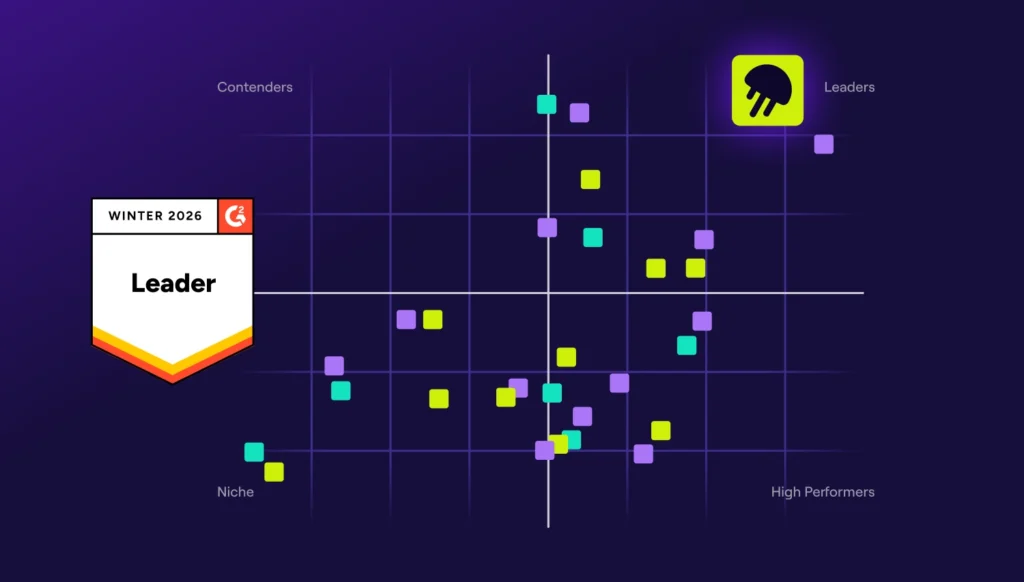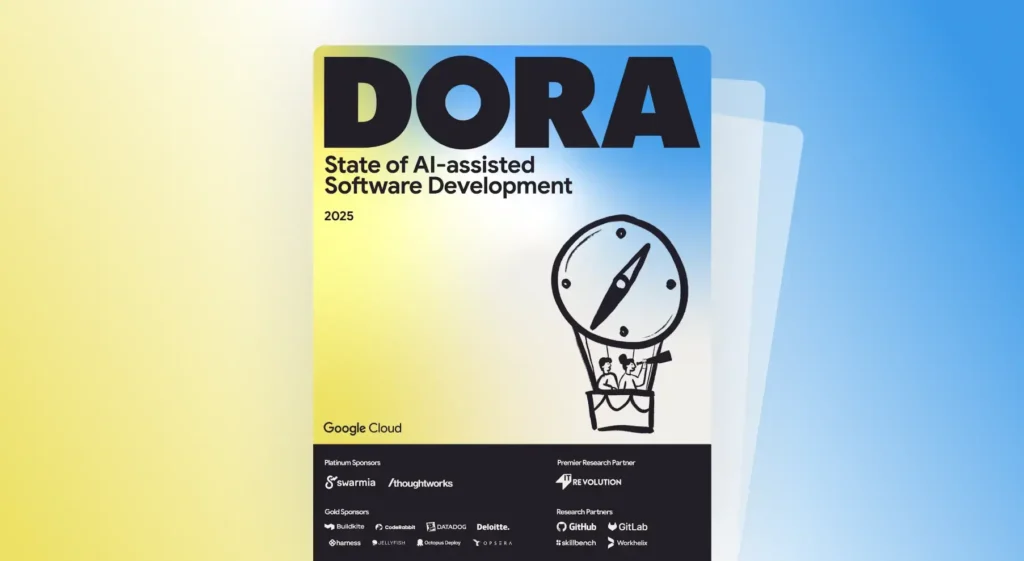In this article
Traditional organizational structures can still be very effective for some engineering teams. However, these more rigid structures often break down in today’s software development landscape, where agility and flexibility are essential for keeping pace with frequent releases and shifting priorities.
Instead, the most effective engineering organizations are those that adapt their structure to fit how they build, communicate, and grow. In many cases, that means blending models, evolving them over time, and customizing them based on product needs and company maturity.
Is It Necessary to Design an Engineering Org Structure?
Is It Necessary to Design an Engineering Org Structure?
In short: Yes. How you structure your engineering team directly impacts how your engineers work together and produce software. In other words, it’s not too much of a stretch to say that the structure of your team shapes the software you create.
For example, effective team structure can give team members more autonomy to make important decisions quickly, which allows for rapid and scalable development and work. A clear organizational structure also ensures everyone is working toward the same goals.
If you want scalable, well-architected systems, you need to design your team structure intentionally and accordingly.
Pros and Cons of Traditional Engineering Organizational Structures
Pros and Cons of Traditional Engineering Organizational Structures
Today, many organizations are moving past traditional engineering structures in favor of more tailored and flexible options. However, understanding legacy structures – and where they thrive or struggle – can help you make more informed decisions around building the best structure for your team.
The Hierarchical Structure
In this classic model, authority flows from senior leaders, like the CTO or VP of Engineering, to engineering managers to individual contributors. Frontend, backend, and QA engineers are grouped with their own leader who manages the team and reports up the chain.

Pros: Hierarchical structure is popular among larger, more established companies that have huge projects where specialization and clear authority are important. The top-down nature of a hierarchical structure does bring well-defined roles, order, and predictability.
Cons: This structure can also slow decision-making and silo different teams, making cross-functional work harder than it needs to be.
The Matrix Structure
The so-called matrix model is a combination of functional and project-based structures, where engineers report to a functional lead for technical matters and a project manager for delivery.
Pros: This is a more flexible structure where engineers can easily work on multiple projects.
Cons: The matrix model also requires extremely clear communication, and dual reporting can cause tension if not managed properly.
The Horizontal/Flat Structure
Flat structures strip away layers of management to give engineers more ownership and decision-making power. Communication is open, informal, and direct.

Pros: This model works well for startups and smaller teams that value speed and innovation. It builds a strong sense of trust and collaboration.
Cons: These flat structures often get chaotic as the company grows and responsibilities become less clear.
The Network Structure
In a network model, the company operates as a central hub and relies on external partners, namely freelancers and agencies, for specific roles or projects.

Pros: This structure offers access to specialized skills without expanding headcount. It’s flexible and scalable.
Cons: The network model demands tight project management and clear communication to keep external contributors aligned with internal goals.
The Team-Based Structure
This structure centers around autonomous, cross-functional teams. Each team owns a product, feature, or service and manages its own workflow and decisions.
Pros: It’s a natural fit for Agile environments, where fast iteration and strong collaboration matter most. When done right, it leads to faster delivery and greater accountability. Tracking important engineering KPIs helps to ensure these teams stay focused and aligned.
Cons: Team-based structures are better suited for Agile work, but still require strong coordination to stay on track and to standardize practices across software development teams.
The Alternative, Modern Approach to Engineering Organizational Structure
The Alternative, Modern Approach to Engineering Organizational Structure
Most modern engineering teams need something other than rigid legacy models. Today, many organizations are designing organizational structures unique to their teams, needs, and work styles. Often, these models prioritize cross-functional and autonomous teams, reduced handoffs to speed up delivery, and long-term product context.
Here are a few examples of how companies today customize organizational structures to better suit modern software engineering.
The Guilds and Chapters Structure (Or, the Spotify Model)
The Spotify model is an Agile-friendly structure in which engineers are organized into small, independent “squads” that own specific parts of the product. Squads are grouped into “tribes” by domain, while “chapters” connect people with shared skill sets across squads to foster knowledge sharing.
Spotify’s squad model allows each team to take full ownership of a product area, from planning to deployment. For instance, a “payments” squad might manage everything from UI to backend services for subscription billing. This reduces handoffs, increases accountability, and lets teams ship faster without needing to constantly loop in other departments.

The Platform and Enablement Approach
This model is inspired by Team Topologies by Matthew Skelton and Manuel Pais. It emphasizes fast flow of value, minimizing complexity, and optimizing team interactions. Under this structure, individuals sit in one of four teams, each of which has its distinct role in the organization:
- Stream-Aligned Teams: These teams own a specific part of the product or workflow and deliver value directly to users.
- Enabling Teams: Individuals on enabling teams often act as mentors, facilitators, or coaches, rather than owning delivery. They hop in to help other teams overcome capability gaps, such as adopting new tools or skills.
- Complicated Subsystem Teams: These teams manage areas or components that require deep, specialized expertise. This shields other teams from complexity.
- Platform Teams: These teams build and maintain internal tools, services, or infrastructure used across the organization. This allows stream-aligned teams to focus on delivering business value instead of getting bogged down by technical details.

The Product-Centric (or Product-Led) Structure
The product-centric structure organizes teams, processes, and funding around the lifecycle and continuous improvement of products rather than projects. In this model, each team owns the full lifecycle from ideation to delivery. These cross-functional teams typically include engineering, product management, and design for faster, autonomous decision-making.
This model emphasizes customer value and iterative improvement, helping organizations respond more quickly to market feedback. It also encourages a strong sense of ownership and accountability within teams. The structure is significant because it aligns organizational focus around delivering outcomes, not just outputs, driving both agility and business impact.

How to Build and Develop the Right Engineering Organizational Structure
How to Build and Develop the Right Engineering Organizational Structure
Not all teams work the same way. To build a structure that best supports your team, first understand your goals, your team, and your business context. Take pen to paper and walk through the following steps to begin creating an organizational structure that works for you.
1. Start with Strategy
You need to understand your size, team capability, product complexity, growth stage, and culture to select an appropriate structure. What works for a boot-strapped startup team isn’t going to fit for an established enterprise.
Next, clearly define what you want to achieve – speed, scalability, innovation, reliability?
Also, think about the key performance indicators (KPIs) you’ll use to measure success, and keep these front-of-mind as you develop your structure.
2. Design Around Your Team
Consider your engineers and your type of team – are they specialists? Generalists? How do important members of your team work best? With autonomy, with guidance? How about the experience of your managers? How does your team communicate and determine team responsibilities?
3. Align Teams with Business Goals
You need to ensure engineering has a clear purpose and ties in with broader business goals. While this may seem obvious, clearly documenting the “why” behind engineering team goals and work goes a long way to finding the right structure.
4. Consider (and Adjust) Existing Models
Look at the structural models we’ve discussed in the article above, and weigh the pros and cons. Think about how each ties into your existing team, teamwork preferences, and goals. Is there an existing legacy or modern structure that could work for you? Can you make adjustments to existing models, or mix and match different practices?
Think through the following factors:
- Departmentalize Tasks and Responsibilities: How you divide the work sets the foundation for how teams operate. You can organize by technology stack (like frontend or backend), by product feature, or around the user journey. Determining the right division depends on your product’s complexity and your need for either deep technical expertise or tight cross-functional teamwork.
- Delineate Clear Reporting Relationships: A clearly defined reporting chain means less time spent stalling and waiting for answers. Make sure engineers know who to report to and where to go for support. At the same time, make sure the chain of command isn’t too layered. The fewer the connections, the better.
- Establish Effective Communication Channels: Your engineering organization structure must facilitate information sharing across all roles and departments. Clarify how this information flow will happen within your organization. Will you use scheduled meetings or real-time chat? Make sure all concerned parties feel comfortable accessing and sharing all relevant knowledge. This is key in improving the developer experience.
- Design for Coordination and Integration: Autonomous teams are great for speed, but without coordination, they risk drifting off course. You need systems in place to keep everyone aligned with broader product goals. Use cross-team meetings, shared documentation, and specific project tracking tools to keep things connected. The goal is to enable independent progress while still building in sync.
- Prioritize Flexibility and Adaptability: Remember, most modern engineering organizations should avoid rigid frameworks that make change tricky. Rather, design your structure to scale and evolve. Make it easy to spin up new teams, shift focus, or reorganize around a new initiative when the time comes.
5. Test, Measure, Edit
Start with a small test group. Gather feedback, track your metrics and KPIs, and refine as needed. Your first structure won’t be perfect. Build in room to adjust as your team and product evolve.
Remember, you don’t need to reinvent the wheel. Study what’s worked for other organizations. Talk to experienced team leaders or bring in expert support if needed. Outside perspectives can help you see what you may have overlooked and move faster.
Optimize Your Engineering Operations with Jellyfish
Optimize Your Engineering Operations with Jellyfish
Gut feelings and observations aside, how can you know if the organizational structure you built for your team is effective? Or if it has unexpected bottlenecks or pain points?
That’s where Jellyfish comes in.
Jellyfish gives engineering leaders the visibility they need to make data-backed decisions about engineering team structure, resourcing, and process improvements. By pulling insights from your existing engineering tools, Jellyfish shows how teams are performing, how they collaborate, and where efficiency breaks down.
With Jellyfish, you can continuously fine-tune your engineering organization to align with business goals, adapt to change, and drive better results. You’ll see where your structure supports success – and where it’s holding you back.
To finally get the organizational structure you need to get to the next level, request a demo with Jellyfish today.
Engineering Team Structure FAQs
Engineering Team Structure FAQs
How does the structure of the product team influence engineering outcomes?
A well-structured product team promotes tight collaboration between engineering, product, and design. This alignment results in more effective prioritization, clearer tradeoffs, and faster, more focused product development cycles.
How is DevOps integrated into modern engineering org structures?
DevOps is often embedded within product engineering teams or operates as a centralized shared services group. Its role is to enhance infrastructure automation, streamline deployment processes, and support continuous integration and delivery efforts across the organization.
What’s the role of a team lead in a modern engineering org?
A team lead provides technical guidance to a small team, facilitates day-to-day execution, resolves blockers, and collaborates with stakeholders for the successful delivery of initiatives. They often act as a bridge between individual contributors and engineering management.
What’s the benefit of using small teams in an engineering structure?
Small teams are more agile and easier to coordinate. They tend to move faster, make decisions more efficiently, and maintain clear ownership over their areas of responsibility. This structure also helps improve focus and accountability.
How are trade-offs evaluated in product engineering teams?
Engineering teams evaluate tradeoffs by weighing factors such as technical complexity, development time, scalability, user impact, and alignment with business goals. These discussions often include product and design partners and may involve stakeholder input to ensure thoughtful decisions.
What’s the difference between a project team and a product team?
Project teams are typically temporary and formed to deliver a specific, time-bound outcome. Product teams, on the other hand, are responsible for the ongoing development, performance, and user experience of a particular product or feature area.
What is the ideal decision-making process in engineering organizations?
An ideal decision-making process includes the right mix of autonomy and collaboration. It should be clear, timely, data-informed, and inclusive of all relevant perspectives — especially product, design, and engineering — while remaining agile enough to adapt to new information or shifting priorities.
What are some common engineering leadership roles?
Engineering organizations typically include roles such as team lead, engineering manager, director of engineering, and VP of engineering. These leaders are responsible for guiding technical direction, managing teams, mentoring engineers, and aligning efforts with the overall business strategy.
About the author

Marilyn is an Engineering Manager at Jellyfish. Her specialities include communicating, programming, researching, working well with others and with the command line, leading, being independently motivated to learn and to create.
She primarily works in Java, JS (mostly React/Redux, some NodeJS, MongoDB, and Angular), and python, with previous experience in PHP, Haskell, C, Perl, and Ruby. Diverse interests along the full stack have led to a plethora of other familiarities, including git, AWS (mostly ECS, S3, RDS, Dynamo, and Cost Explorer), Jenkins, TravisCI, PostgreSQL, Spring, mvn, svn, MySQL, XML, XSLT, CSS, sed, yacc, x86 assembly, and many other acronyms.





